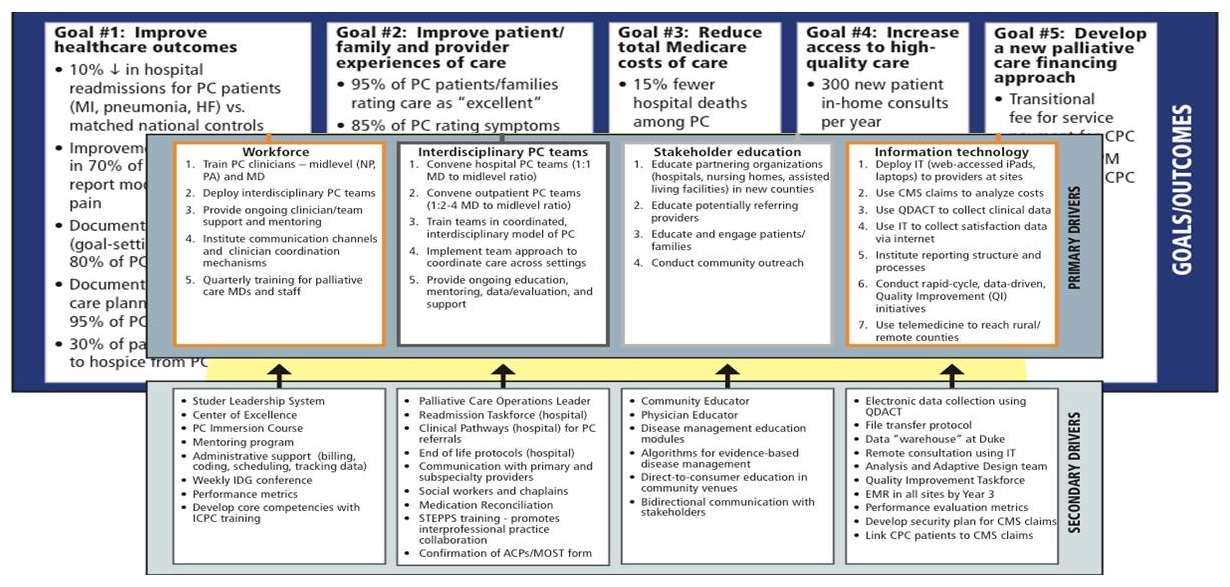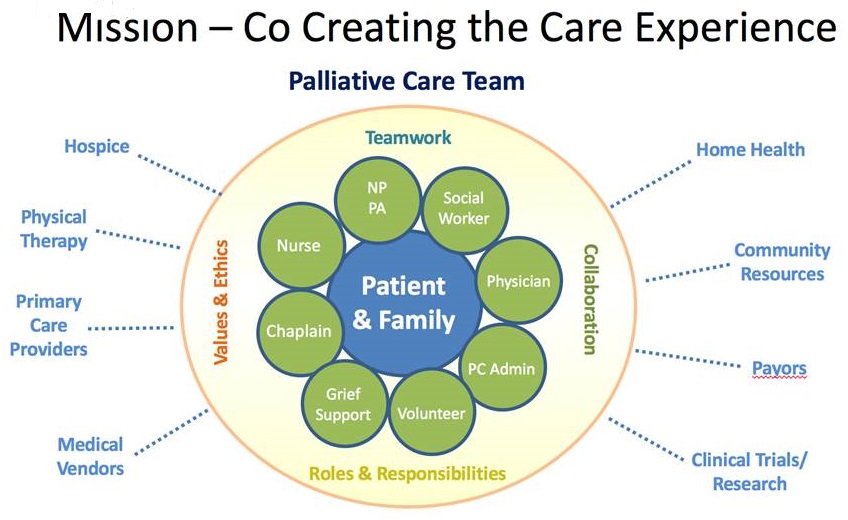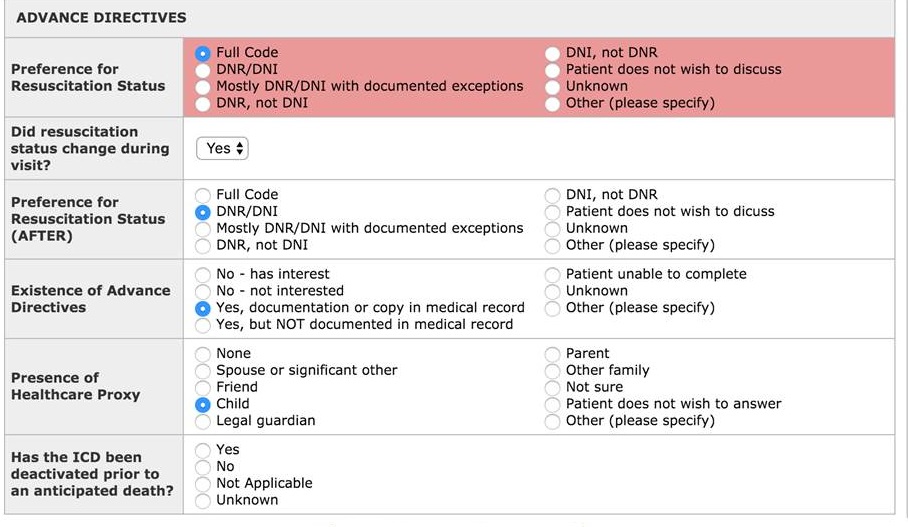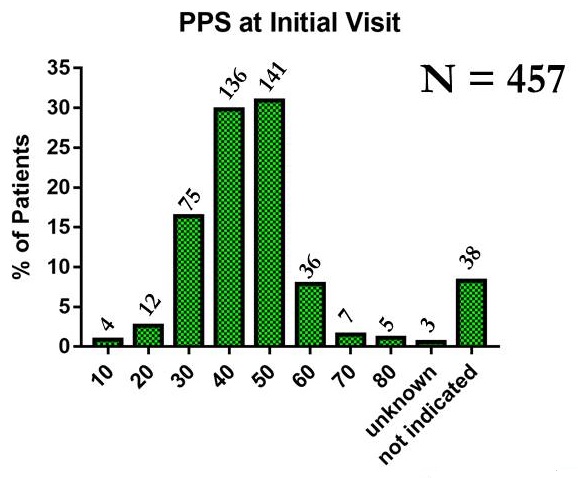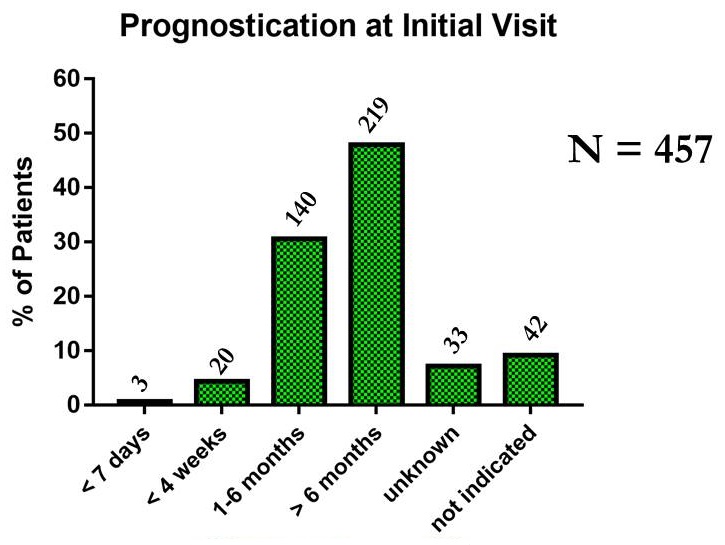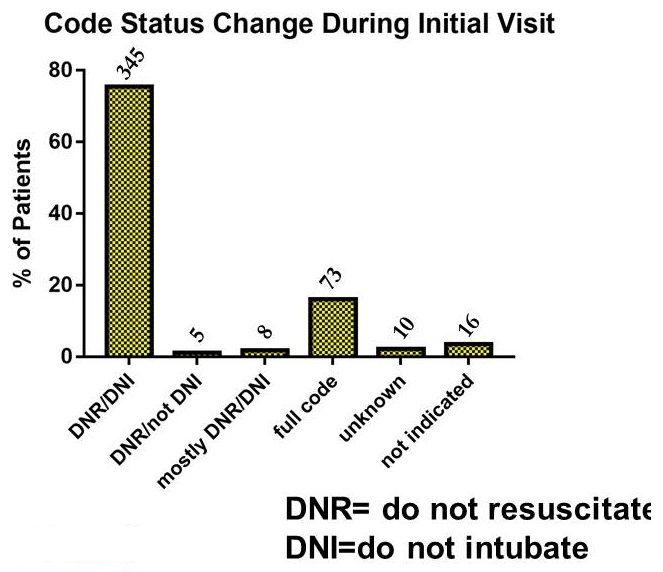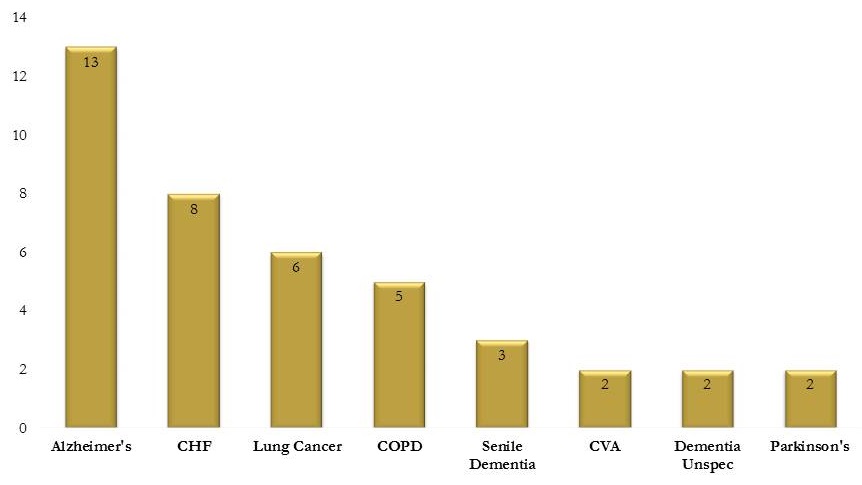Monday, August 1, 2016
CMMI Project Demonstrating the Value of Palliative Care
Janet Bull MD, MBA, FAAHPM
Objectives
Discuss components of palliative care
Demonstrate the benefits to dementia patients
Discuss payment reform in hospice and palliative care
Four Seasons
Located in Hendersonville, NC
Retirement community
25% population over 65 years old (compared to 13%)
High dementia population -- number 1 referring diagnosis for both hospice and palliative care
Why Palliative Care?
Need to improve care for seriously ill patients
Aligned with Mission of providing exceptional end of life care
Provide care across the continuum of care settings
Unsustainable financial model under current reimbursement structure
Palliative Care Services Focus on...
Symptom management
Prognostication
Advance care planning
Establish goals of care
Educate patients on their disease process
Spiritual and psychosocial support
Assist with community resources
Coordination of Care
Help patients navigate the healthcare system
Mary's Story
74 year old black female with advanced dementia, living with her daughter at home
major behavioral issues -- combativeness, agitation
polypharmacy
hospitalized 2 times in past 12 months (fall, pneumonia)
daughter quit work to provide care - exhausted & stressed
no advanced care planning
Impact of Palliative Care
Improving Helath of Individuals & Populations
Improving Patient Experience
Reducing the Cost of Care
CMS Innovations Grant
Scale model into 14 counties, delivered longitudinal across all care settings
Track Quality
Define Costs
Test innovation -- Tele-palliative care
Developing/Testing a New Payment System
Four Seasons Expanding Palliative Care Across Western NC and Upstate SC
Western North Carolina
Update South Carolina
Goals and Driver Diagram
Eligibility
Medicare Age Eligible
Patients with life limiting illness in last 3 years of life
Uncertainty of appropriateness of therapy (curative, palliative, hospice)
Excludes 54% of palliative care patients (younger, Medicare Advantage, etc)
Screening Tool for Palliative Care Referrals
Four Seasons Palliative Care Model
Standardizing Care
Developing good processes/procedures
Data collection
Data analysis/tracking
Quality improvements
Measuring satisfaction
The Initial Palliative Care Visit by MD, DO, NP, PA, and RN
PRE-VISIT
Determine reason for consult
Review H&P, meds, labs, xray, etc.
Identify other agency involvement
Clinic -- New Patient Packet at Sign-In
New Patient Packet:
Confident Care booklet
Consent
Letter
VISIT
RN
Explain program and review New Patient Packet
Review symptoms
Reconcile meds and list allergies
Obtain social history
Do spiritual assessment
Discuss ACP
Identify goals
Assess functional status and safety
Assess VS, O2 sat, ht/wt, consitution, eyes, ENT, lymph, resp, cardio, GI, GU, MS, skin, neuro, psych
Formulate care plan with patient/family
MD, DO, NP, PA
Explain program and review New Patient Packet
Review symptoms
Reconcile meds and list allergies
Obtain social history
Do spiritual assessment
Discuss ACP
Identify goals
Assess functional status and safety
Assess VS, O2 sat, ht/wt, constitution, eyes, ENT, lymph, resp, cardio, GI, GU, MS, skin, neuro, psych
Determine prognosis
Formulate care plan with patient/family
POST-VISIT
Determine Risk Level
Complete visit documentation- to include QDACT
Forward copy of notes to facility and/or referrer
Collaborate with other members of IDG
Rist Assessment
PRIORITY OF VISIT
High
Medium
Low
Transition
Transition from hospital within last 2 weeks
Transition from hospital within last 15-30 days
No hospitalization or ER visits within last 3 months
Symptom
Mod-Severe Symptoms: pain, dyspnea, constipation, N&V
Function
20% drop in PPS
10% drop in PPS
PPS stable by <50%
Meds
3 or more medication changes within last week
Initiation of opioids
1-2 medication changes within last 15-30 days (opioids, anti-psychotics, cardiac meds)
< 1 medication change within last 3 months
Nutrition
Sudden nutritional decline (5% weight loss in 1 month) with BMI < 21
Albumin < 2.5
>5% weight loss over last 2-3 months with BMI < 21
Albumin 2.5-3
<5% weight loss in last 3 months
Infection
Infection with systemic symptoms within last 2 weeks
> Stage 2 pressure ulcerAspiration
2 infections within last 2 months
Stage 2 pressure ulcer within last 2 months
No infections within last 3 months
PSYCHOSOCIAL RISK ASSESSMENT
RISK
High
Medium
Low
Psychosocial
Sudden cognitive changes
Mental health diagnosis accompanied by disruptive verbalizations/behaviors. Concern for patient or caregiver safety.
Suicidal ideation, especially with plan. Despair.
Signs/Symptoms of abuse/neglect. Unsafe situation for patient.
Caregiver decompensation. Immediate safety concerns.
Anhedonia- flat affect and not participating in > 3 activities
Significant losses in last 2 years. Unresolved grief issues.
Depression.
Expresses fear/anxiety about money, worried about caring for family, concerned about paying for services
Caregiver stressed, showing some signs of burnout, but no immediate danger to patient or caregiver. Placement issues.
Transition to hospice- pt/family require psychosocial support in making decision for hospice care. Complex family dynamics.
Caregiver available and adequate to manage patient care. May need some self-care strategies or information on community resources.
Advance care planning needs.
Quality Data Assessment Tool
PC Tracking
Enrollment
N = 2450 Total
N = 522 Dementia
Hospice Transitions
700 (33%)
181 (35%)
Palliative Care Deaths
237 (11%)
59 (11%)
Palliative Care Discharges
665 (31 %)
141 (27%)
Active PC Caseload
457 (24.3%)
141 (27%)
Story tells....
50-60% die within 1 year (80% from data 2 years ago)... PC moving upstream
33% discharged after acute episode; of these ~ 10% readmitted
Dementia
Challenges
Difficult to prognosticate
Slow disease trajectory
High caregiver distress/burnout
Often stabilize/improve with supportive services
Palliative Care -- Dementia CMMI patients
Add
Functional Status of PC Dementia Patients
Palliative Performance Scale (PPS)
%
Ambulation
Activity and Evidence of Disease
Self-Care
Intake
Level of Conscious
100
Full
Normal activity, no evidence of disease
Full
Normal
Full
90
Full
Normal activity, some evidence of disease
Full
Normal
Full
80
Full
Normal activity with effort, some evidence of disease
Full
Normal or reduced
Full
70
Reduced
Unable to do normal work, some evidence of disease
Full
Normal or reduced
Full
60
Reduced
Unable to do hobby or some housework, significant disease
Occasional assist necessary
Normal or reduced
Full or confusion
50
Mainly sit/lie
Unable to do any work, extensive disease
Considerable assistance required
Normal or reduced
Full or confusion
40
Mainly in bed
Unable to do any work, extensive disease
Mainly assistance
Normal or reduced
Full, drowsy, or confusion
30
Totally bed bound
Unable to do any work, extensive disease
Total care
Reduced
Full, drowsy, or confusion
20
Totally bed bound
Unable to do any work, extensive disease
Total care
Minimal sips
Full, drowsy, or confusion
10
Totally bed bound
Unable to do any work, extensive disease
Total care
Mouth care only
Drowsy or coma
0
Death
---
---
---
---
Prognostication by Clinicians
Code Status -- Dementia Patients - PC
Policy Issues
Lack of long term care benefit
Little reimbursement for other disciplines
New Care Management codes
Advance care planning
Transitional care codes
Chronic care codes
Diagnosis Hospice Claims 2015
Differences - Hospice vs Palliative
Hospice
Palliative Care
Life Expectancy
< 6 months
Any stage of illness
Treatment
Comfort
Curative or comfort
Care settings
All
All
Resources
Significant
Limited
Delivery model
Interdisciplinary Team
Interdisciplinary Team
Payment Model
Medicare Hospice Benefit
Medicare Part B E/M codes
How to Pay for Services?
Developing Alternative Payment Approaches
Covered Services
Advance care planning
Goals of care (3 meetings)
Social work, chaplain, patient family volunteers
RN case management and care coordination
Not covered (hospitalization, primary care, specialty care)
As the World Turns (Grant submission to today)
2013
Transitional Fee for Service payment for CPC
1-3yr analysis
Bundled PBPM Payment for CPC
Promote PC clinical care model Expansion
Promote best practice ACO integration of transitional care models
Financial Ecosystem changes through Legislation and Policy
Changing Accountable Care Act implementation
Accountable Care Organization alignment -- Incentives
Hospice -- Hospital -- Transitional Facility FFS/PBPM changing
Payment Approach Replication Throughout Medicare
Dependent on Financial alignment
Value Proposition in patient outcomes
Value Proposition in reducing Total Cost of Care
2016
Jan 1, 2016 *2 CPT codes for Advanced Care Planning (MD only, Outpatient Primarily, State interpretation)
2015 *CCM Chronic Care Management $42 monthly PBPM
Questions Around Payment Approaches
Challenges for Evaluation
Medicare Part A vs Part B -- increase Part B while reducing Part A costs
PBPM payment 30/60/120
Bundled payment (60/120 days) Who holds?
Care management codes (increase Part B bucket)
Changes in hospice payment (two tiered payment, Service Add on)
Susan's Story
82 year old white female with end stage dementia admitted to the hospital with second episode of aspiration pneumonia
wandering, behavioral issues
feeding issues -- considering PEG tube
lives with son and his wifej who are overwhelmed
Questions?
jbull@fourseasonscfl.org(link sends email)


